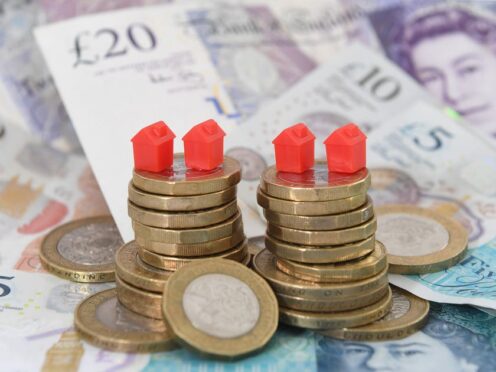Rents across the UK could continue to rise strongly and outpace earning growth over the years ahead, according to a think tank.
Average rents could rise by 13% over the next three years, the Resolution Foundation predicts.
The typical cost of new tenancies has already grown by 18% since January 2022, with private renting no longer being the preserve of people aged in their 20s, according to the Foundation, which is focused on improving the living standards for those on low to middle incomes.
It said a bounce-back from the coronavirus pandemic, during which evictions and repossessions were halted, and recent wage growth have helped rental prices to surge.
Some of the recent surge in rental prices is a post-pandemic “correction”, the Foundation argued.
This post-pandemic catch-up has been compounded by earnings growth, with average earnings rising by 13% since the start of 2022.
While the catch-up is now complete and pay growth is cooling, it could take years for the burst of growth already seen to make its way through the whole private rental sector, the Foundation cautioned.
It said: “New renters will pay these new higher rents, while existing tenants reaching the end of a tenancy or forced to accept within-tenancy price rises will in future face large rent hikes.”
If it is assumed that average rents paid will return to their pre-pandemic level compared to earnings in three years’ time, then rents would typically see more than 13% price growth over that period – outpacing the 7.5% earnings growth expected during that time, the report said.
Cara Pacitti, senior economist at the Resolution Foundation, said: “Millions of families agreeing new tenancies across Britain have faced surging rents in recent years as we have emerged from the pandemic.
“Those rises for new tenancies are starting to slow, but how much renters actually pay will continue to outgrow how much they earn for some years to come as those not yet exposed to higher prices are hit.
“With more families renting privately, and renting for longer too, these rent surges are a bigger problem for Britain and require bolder solutions from policymakers.
“Short-term solutions include regular uprating of Local Housing Allowance to support poorer families, and the ultimate longer-term solution is to simply build more homes.”
A Government spokesperson said: “Our Renters (Reform) Bill will give people more security in their homes and empower them to challenge poor practices.
“Through our long-term plan for housing, we are investing £11.5 billion in the Affordable Homes Programme and remain on track to build one million over this Parliament.
“We are supporting people with rising costs with £108 billion to help with bills – an average of £3,800 per household, and we have increased the Local Housing Allowance rate so private renters on housing benefit or universal credit are on average nearly £800 a year better off.”
